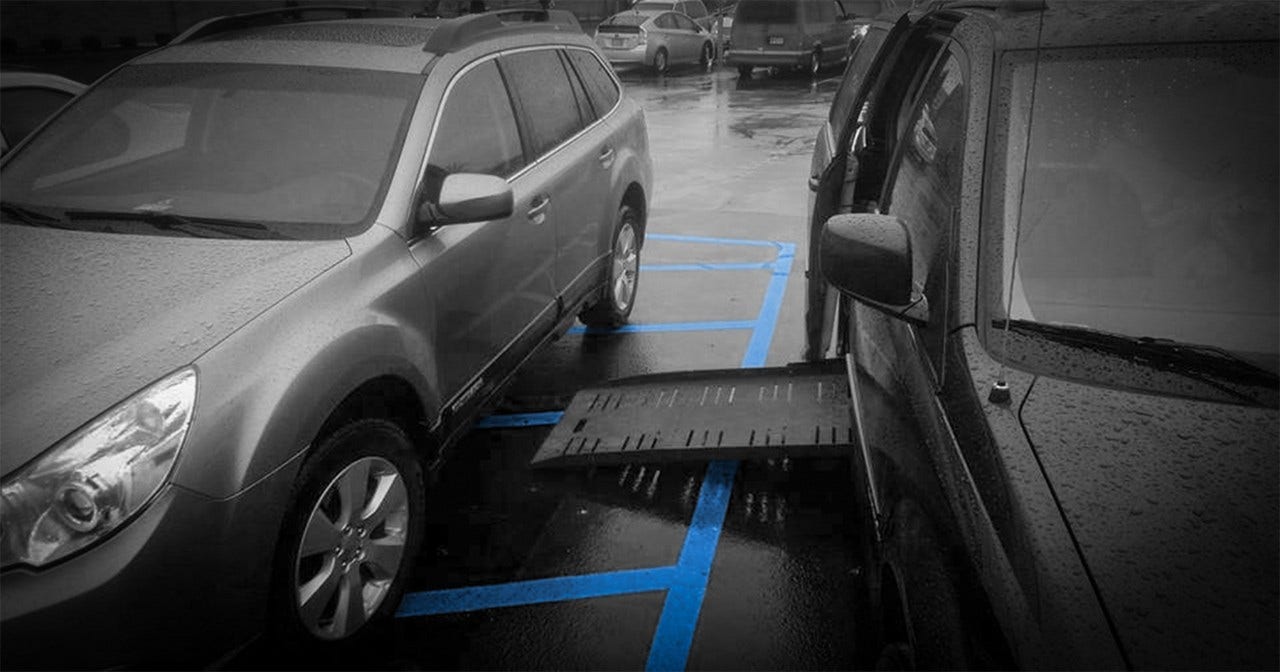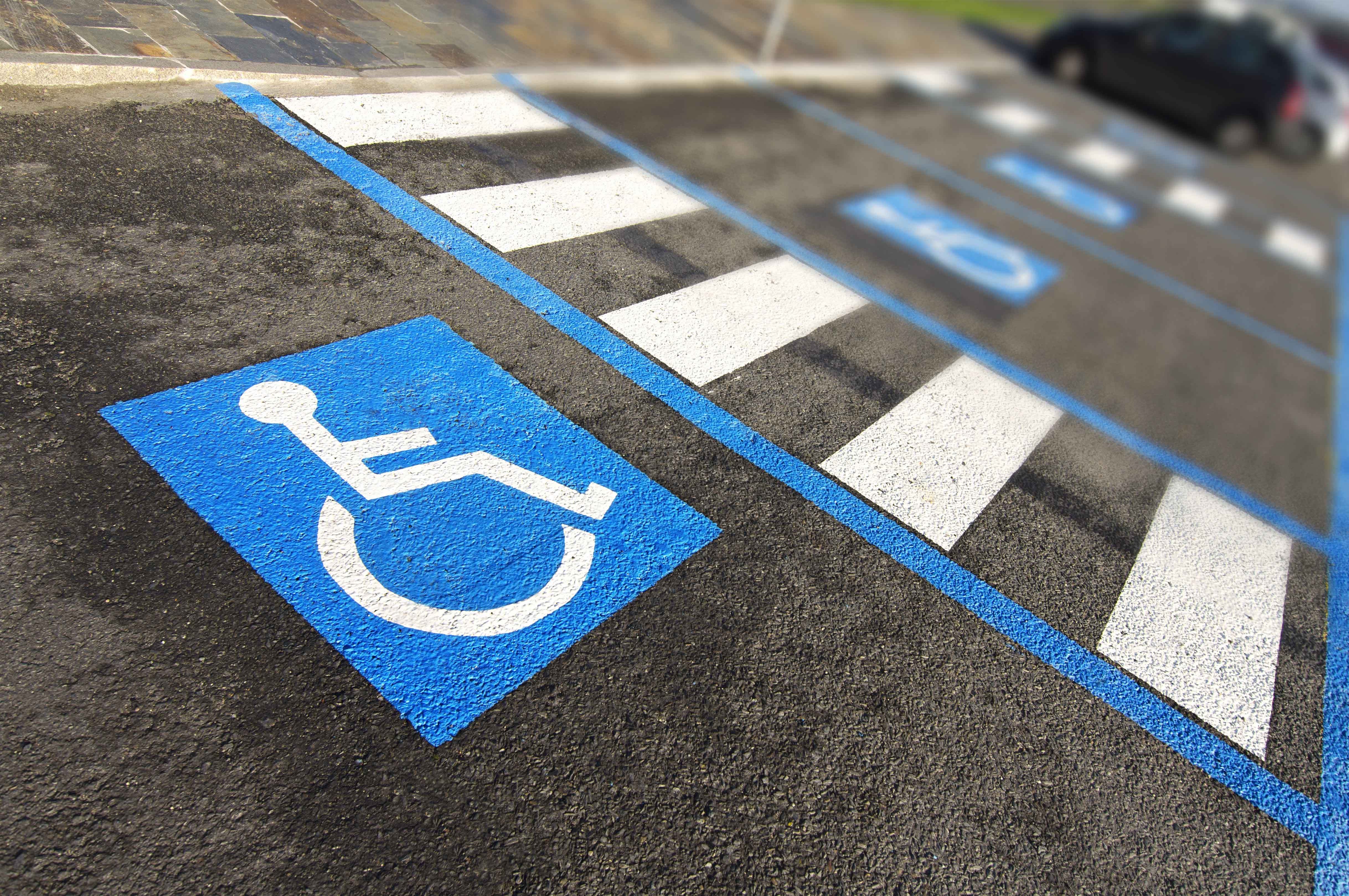
3D Handicap Parking Spaces: Art Protects Accessibility for All
Imagine driving to your favorite local coffee shop but having no way to enter once you arrive, or returning to your vehicle after a day out, only to find you can’t get back in. This frustrating scenario is a reality for many wheelchair users and people with mobility disabilities. When handicap parking signs and accessible parking laws are ignored, accessibility barriers are created for people with disabilities.
Recognizing Handicap Parking Spaces
Whether you’re a driver or a passenger, you've likely noticed designated wheelchair parking spots in parking lots in your community. These spaces are typically painted in light blue and are strategically positioned closest to the entrances of nearby establishments. These closer parking spaces ensure individuals with mobility disabilities have a short, accessible route to the buildings they need to enter. Accessible parking spots feature a recognizable blue and white icon of a wheelchair user painted within the spot. These spaces are also marked with a handicap parking sign, indicating they are reserved for people with mobility disabilities who have a handicap parking placard or license plate.
The Importance of Access Aisles
What often goes unnoticed or misused is the space adjacent to these parking spots—the diagonal lines, often marked in blue or white. These lines indicate a reserved area known as the access aisle. Unfortunately, people frequently misuse these spaces, treating them like a cart corral or an additional parking spot.
For those who drive or are a passenger in a wheelchair accessible vehicle, access aisles offer the space needed for a wheelchair ramp or lift to deploy, allowing a person to get in and out of their vehicle. For those without accessible vehicles, access aisles are important, too. Mobility aid users often cannot safely squeeze between traditional parking spots with a mobility aid to open a car door. Even minimally crossing the diagonal lines can create significant challenges for those with mobility disabilities, regardless of whether they have a wheelchair van, which is why it’s important to keep access aisles clear.
What Are the Requirements for Handicap Parking?
The Americans with Disabilities Act (ADA) mandates requirements for accessible parking. There are two types: car and van accessible spaces. Car spaces must be 96 inches wide with a 60-inch access aisle. Van spaces offer two configurations: either a 96-inch space with a 96-inch aisle or a 132-inch space with a 60-inch aisle, both totaling 192 inches. This width is important for ramps and lifts, enabling safe vehicle access for mobility aid users. Van accessible parking spaces feature two signs: one displaying the standard handicap parking symbol and another indicating "van accessible." Car accessible parking spaces have a single sign with the standard handicap parking symbol. Parking a standard vehicle in van accessible spaces or on access aisles can keep wheelchair users from getting in or out of their vehicle, especially for power wheelchair users, who cannot lift their wheelchair into a vehicle.
The ADA typically requires one accessible spot per 25 standard spots, with specific guidelines for larger areas. Given the limited availability, it's important to keep wheelchair accessible parking spots and access aisles clear and adhere to handicap parking laws.
Only people with a handicap placard or license plate should use these accessible parking spaces. Parking in a wheelchair accessible spot without a valid handicap placard or license plate is not only against the law, but it can also result in fines. Violators typically face an average penalty of $250. This fine serves as a deterrent, emphasizing the importance of reserving these spaces for those who truly need them.
3D Art Protects Accessible Parking Spaces
BraunAbility set out to raise awareness of the misuse of wheelchair accessible parking spaces and access aisles. Working with commercial chalk artist Tracy Lee Stum, a former Guinness World Record holder known for her 3D chalk and street painting art, the collaboration led to an innovation—a 3D optical illusion for parking space access aisles. It mimics a raised barrier, giving the appearance that parking in access aisles is not possible, discouraging drivers from parking in the space reserved for people with disabilities.
Creating an Inclusive Culture
This 3D art is part of BraunAbility’s Drive for Inclusion movement. While these unique optical illusions can be found in some parking lots throughout the country, another initiative, Save Our Spots, also discourages accessible parking misuse. You can order your own pack of Save Our Spots ‘tickets’ for free, as part of our Drive for Inclusion initiative, to use when you see accessible parking misuse.




